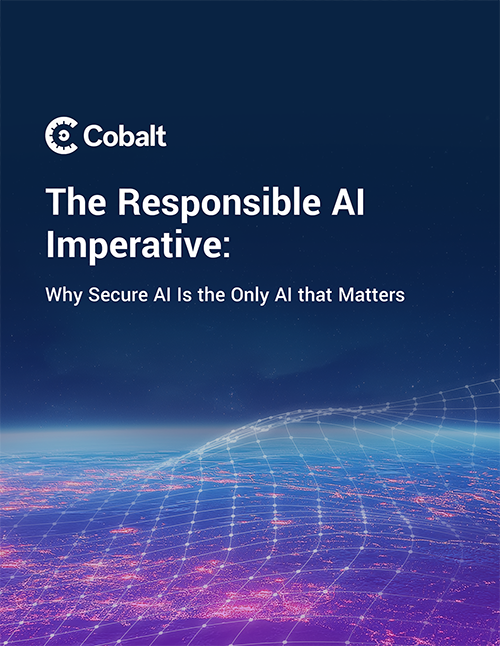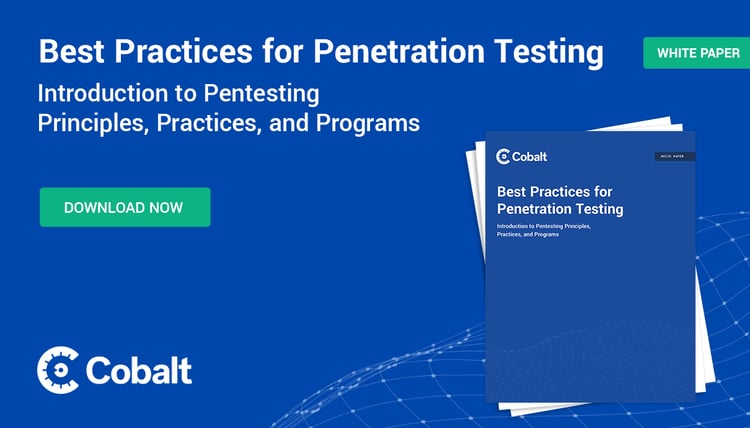Penetration testing for SaaS companies helps pre-empt attacks that exploit unique security vulnerabilities facing cloud-based applications. Multi-tenancy vulnerabilities, authentication miscongfigurations, and API and third-party exposure make cloud-based apps high-profile targets for attackers. Addressing these issues requires pentesting strategies that implement continuous, integration-aware methodologies that align tests with release cycles, leverage agility, apply coverage across environments, and prioritize remediation collaboration. Here’s a guide to how to use pentesting to address SaaS vulnerabilities.
Why Software as a Service (SaaS) Companies Are Prime Targets
SaaS companies have become primary targets of cybercriminals in recent years, with breaches on the rise as traditional defenses increasingly fail to stop attackers. The cloud-based, shared nature of SaaS services expands potential attack surfaces, opening up multiple angles for hackers to target. Cloud-based vulnerabilities include:
- Container misconfigurations
- Poor encryption management
- Weak identity and access management (IAM) procedures
- API misconfigurations
- Integrations with AI and LLM apps vulnerable to injection prompts
- Unmanaged assets
- Outdated accounts
- Compromised user endpoints
The rise of remote work has multiplied the opportunities for attackers to target these vulnerabilities, while AI has given them more efficient tools to exploit them. Proactive pentesting has become vital for to safeguarding company and customer data from these threats and maintain brand trust.
What Penetration Testing Means in a SaaS Context
Penetration testing is an offensive security strategy that simulates attacks in order to identify exploitable weaknesses, evaluate risks, and prioritize mitigations. In an SaaS context, this involves testing vulnerabilities across web applications, cloud infrastructure, and configurations characteristic of cloud-hosted environments, such as configurations for containers, IAM solutions, and API keys
SaaS pentesting is conducted through a systematic process:
- Defining testing scope
- Conducting reconnaissance on attack surfaces and vulnerabilities
- Attempting to gain access
- Exploiting access
- Analyzing and reporting findings
- Recommending remediations
To maximize security, SaaS pentests should be followed up with ongoing verification to ensure mitigations have been implemented and stay maintained through software updates and changing attack patterns.
Unique Security Challenges for SaaS Providers
Applying pentesting effectively to cloud environments requires addressing some of the security challenges specific to SaaS services. Issues to address include:
- Configuring cloud virtual network elements correctly, including firewall rules, routing tables, DNS settings, and access control lists
- Implementing and maintaining encryption
- Managing non-empty virtual networks
- Configuring containers and buckets correctly to protect them from unauthorized access
- Detecting suspicious activity across containerized environments
- Configuring IAM roles and permissions to prevent unauthorized access
- Implementing multi-factor authentication (MFA) policies
- Managing API key credentials to prevent exposure
- Securing integrations from risks such as LLM prompt injections
- Managing supply-chain risks from third-party dependencies
- Keeping software updated
- Monitoring assets to remove unnecessarily exposed data, delete data dictated by compliance policies, and maintain encryption and backups of required data
- Encrypting data both in storage and in transit
- Monitoring user accounts to prevent unauthorized use of current or inactive accounts
- Ensuring SaaS security policies meet regulatory requirements
This partial list of a diverse array of requirements highlights the complexity of adequately securing SaaS apps, highlighting the need for pentesting to cover your bases.
Common Vulnerabilities Found in SaaS Applications
Given the enormous complexity of SaaS attack surfaces and the complex variety of issues they present, pentesting professionals have found it expedient to prioritize vulnerabilities based on frequency of findings. Resources such as the Open Worldwide Application Security Project (OWASP) and Cobalt provide guides to today’s leading SaaS vulnerabilities and their mitigations. OWASP identifies today’s top ten web application vulnerabilities as:
- Broken access control: failing to prevent users from acting outside their permission restrictions
- Cryptographic failures: leaving sensitive data or functionality exposed through encryption errors, such as transmitting credentials in cleartext, using outdated algorithms, or relying on default crypto keys
- Injection: Leaving apps open to malicious injection through vulnerabilities such as poor validation, filtering, and sanitization of user input.
- Insecure design: overlooking security features during app development
- Security misconfiguration: Incorrect configuration of components such as cloud service permissions, enabled ports, default passwords, or APIs
- Vulnerable and outdated components: failing to implement controls such as version tracking, software updates, or vulnerability scanning
- Identification and authentication failures: authentication vulnerability issues such as failing to prevent credential stuffing, brute force attacks,
- Software and data integrity failures: errors such as allowing resources from insecure libraries, using insecure CI/CD pipelines, or using auto-updates without integrity validation
- Security logging and monitoring failures: failing to log suspicious events, generate alerts, or trigger follow-up actions
- Server-side request forgery: allowing apps to fetch remote resources without URL validation
Cobalt pentesting research shows that statistically, server security misconfiguration is the most web and API vulnerability, accounting for 28.4% of findings in 2024. Missing access control is the next most common issue, comprising 19.2% of findings. These vulnerabilities significantly exceed the next most frequent findings, cross-site scripting (9.4%), sensitive data exposure (8.1%), and authentication and sessions (8.0%).
Types of Penetration Tests for SaaS Environments
Pentesting services provide different types of tests for various SaaS environments and attack scenarios. SaaS testing services include:
- Web application tests: Pentests of web applications focus on securing code throughout the software development lifecycle. They can assist with identifying coding mistakes, uncovering unknown attack vectors, or meeting project requirements.
- API testing: API tests find vulnerabilities in connections between cloud apps. They can identify flaws such as authentication issues, prompt injection vulnerabilities, and data exposure.
- Cloud configuration reviews: Cloud configuration pentests verify that cloud infrastructure settings are aligned with security best practices. They check components such as network settings, encryption, container and bucket security, IAM integrity, and database security.
- Internal network pentests: Pentests of internal networks simulate attacks on intranets and require pentesters to be provided with internal access. They can be used to evaluate insider threats or ways an outside attacker might exploit vulnerabilities from inside your system.
- External network pentests: Pentests of external networks simulate attacks without the benefit of prior network diagrams or account access. They use resources such as corporate websites, other assets, domain names, and public records to gain access to systems and exploit them.
- Secure code reviews: Secure code reviews probe for coding vulnerabilities during development. They identify coding mistakes that can create vulnerabilities such as SQL injection, cross-site scripting, authentication flaws, and business logic flaws.
- Red teaming: An alternate offensive security method that complements pentesting’s comprehensive approach, red teaming focuses on realistically simulating an actual attack. Red team tests seek to identify vulnerabilities, validate security controls, and develop strategies for limiting breach impact.
- Digital risk assessments: Digital risk assessments use public sources to assess organizations from an external adversary’s vantage. They protect brand reputation by mitigating threats such as impersonation, fraudulent websites, and malicious content.
These various testing methods can be scheduled as needed through pentesting as a service (PTaaS) platform that lets you connect with expert pentesters for customized tests.
How SaaS Architecture Influences Pentesting Strategy
SaaS architecture helps direct pentesting strategy by defining testing scope and the contours of attack surfaces to be mapped and tested. Various major characteristics of SaaS architecture shape pentesting methodology:
- Remote infrastructure: Cloud-based infrastructures shift the focus of pentesting away from network perimeters to the entire cloud environment and software stack, including containerized environments, data storage services, application layers, API integrations, and third-party dependencies.
- Shared responsibility models: Users of cloud services must conduct pentests within the bounds of provider shared responsibility policies.
- Cloud configurations: Cloud settings, identity and access management, data integration, and update tracking must be configured correctly.
- Multi-tenancy: Shared cloud infrastructures require strong identity and access management policies.
- Scalability: SaaS architectures are designed to be scalable in terms of data, traffic, and applications, requiring pentest strategies to adjust both to the size and complexity of architecture scale.
- Microservice-based architecture: The scalability of SaaS architecture frequently includes dependency on numerous microservices, increasing the size and complexity of attack surfaces.
- API integration security: Microservices integrate through APIs, making API vulnerabilities a major focus of SaaS pentesting.
- Continuous updating: The numerous components of SaaS architecture require constant updating to keep versions and security current, making continuous testing critical for effective defense against changing environments and emerging threats.
These SaaS architecture issues help determine the scope and methodology of pentesting strategies. They necessitate a broader scope with strong access controls, integration awareness, and a continuous testing approach.
Compliance and Customer Assurance Drivers
Compliance and brand trust also shape pentesting parameters. A growing number of regulatory frameworks either require pentesting or recommend it to meet compliance standards. For example, the Payment Card Industry Data Security Standard (PCI-DSS) standard requires pentesting once a year as well as after major technology updates, while the Health Insurance Portability and Accountability Act (HIPAA) does not currently specify pentesting but does require companies to identify and protect against reasonably anticipated threats. Other frameworks which recommend but don’t specifically require pentesting include the General Data Protection Regulation (GDPR), International Organization for Standardization-27001 (ISO-27001), and Service Organization Control 2 (SOC 2).
Brand reputation with customers and investors further inform pentesting requirements. Even when not specifically required for compliance, investing in pentesting to harden your security posture can help reduce the risk of data breaches or app disruptions undermining customer and investor confidence.
Best Practices for Effective SaaS Penetration Testing
To implement SaaS penetration testing effectively, numerous requirements must be met. These can be organized under some general best practices:
- Schedule regular comprehensive pentesting of your entire attack surface as well as continuous testing of specific vulnerabilities.
- Align ongoing tests with software release cycles.
- Leverage PTaaS services for agility to tap into external expertise and schedule customized pentests rapidly, using a vendor evaluation checklist to help you choose a provider.
- Scope tests to ensure coverage across all relevant environments.
- Prioritize remediation collaboration to mitigate high-ranking risks.
- Use detailed findings reports to prioritize and recommend mitigations.
Working with an offensive security platform can expedite implementation of these imperatives by tapping into the experience of expert pentesters.
From One-off Tests to Continuous Security Validation
Annual pentests represent a minimum standard for many compliance frameworks. Some higher risk industries such as fintech or healthcare require more frequent pentests, such as binannual or quarterly cycles. But to maximize the value of pentesting, the best practice is to move toward ongoing vulnerability validation integrated with DevSecOps workflows.
Making pentesting a standard part of your DevSecOps workflow helps resolve issues before they go into your production environment and damage your company, customers, or reputation. Pre-emptive pentesting also saves your security team time and money fixing mitigations later in the software cycle.
Build SaaS Resilience through Continuous Testing
Regular, well-scoped pentesting isn’t just a compliance exercise: it’s a cornerstone of SaaS security maturity and customer trust. Investing in ongoing pentesting and following the best practices recommended here can help protect your brand and reputation against ongoing threats and maintain customer trust, investor confidence, and profitability.







